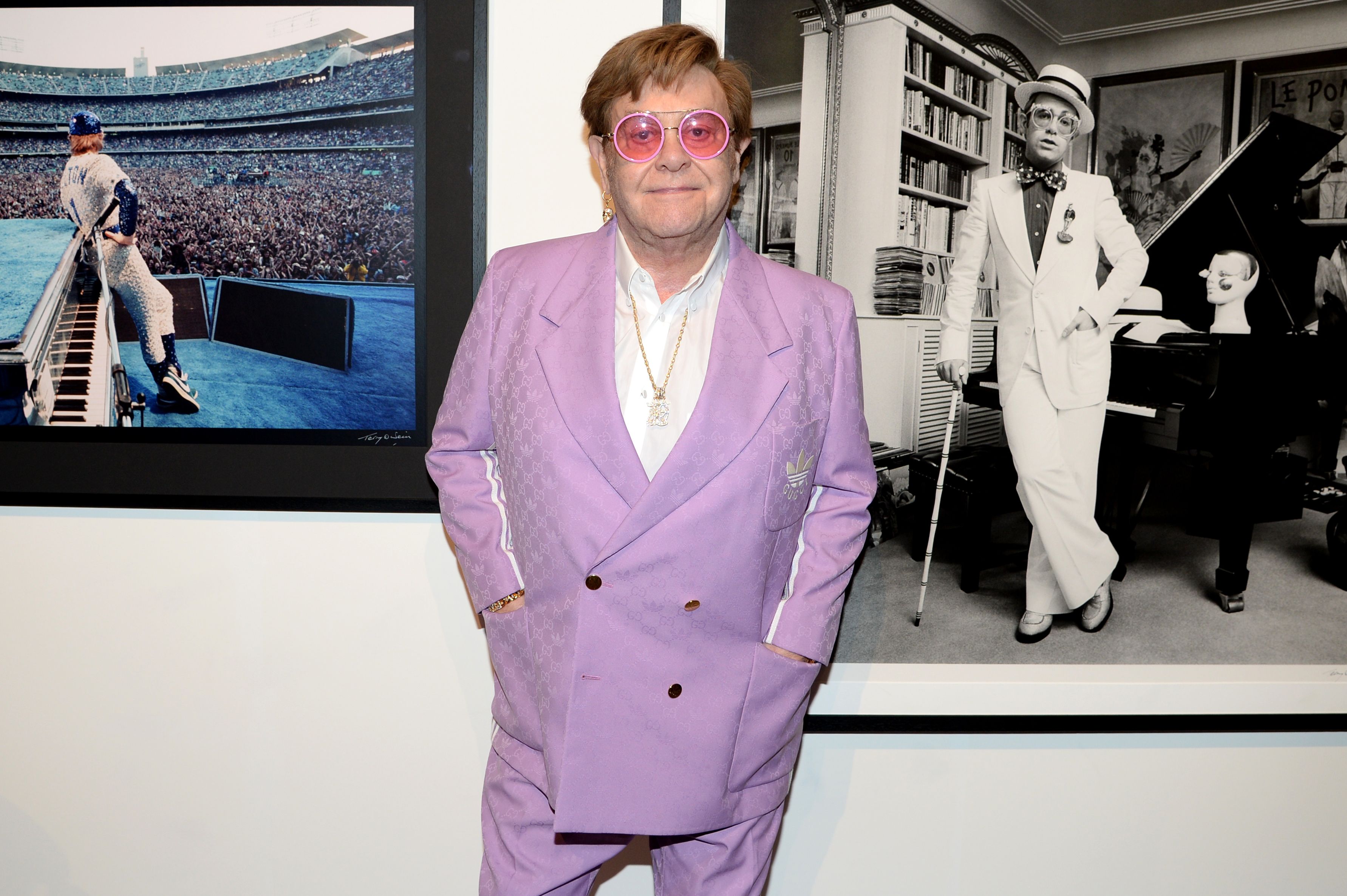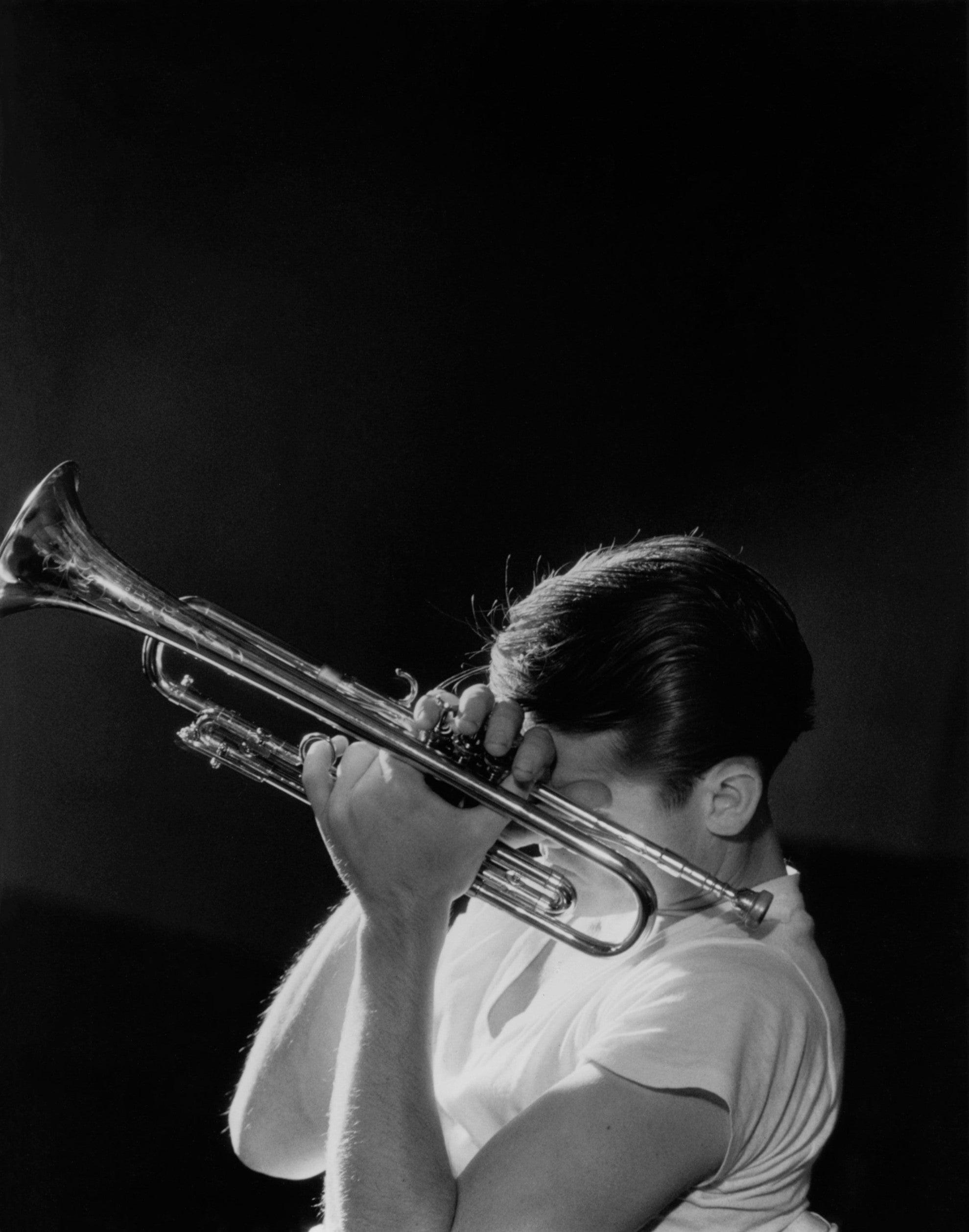‘A much healthier addiction than buying drugs’: The story of Elton John’s great photography obsession
He swapped cocaine for the flash bulb in 1990, emerging from rehab to start a stellar photography collection (for which he has his own full-time director) that now comprises nearly 10,000 works. As a major new show from his personal archive opens at the V&A, Mark Hudson reveals how the Rocket Man gets his fix from the frame game

Last October in Stockholm, Elton John performed the final concert in his five-year Farewell Yellow Brick Road world tour, bringing down the curtain on one of the most successful music careers in history. Yet anyone expecting the global superstar and hugely influential activist to sink quietly into the oblivion of retirement is badly mistaken.
On Saturday the Victoria and Albert Museum opens the biggest photography exhibition in its history, Fragile Beauty, drawn entirely from the collection of John and his husband, David Furnish. Comprising 300 works by 41 artists, it not only features some of the most iconic images in the history of the medium, but announces John as one of the most significant collectors of the post-war era.
“Everything [in my collection] has been chosen by me,” John told The Observer in 2016. “My curator will suggest stuff, but nobody goes and collects on my behalf. I’m not known for my restraint, but for me this collection is about love, not collecting for the sake of it or grandstanding.”
Certainly, as you’d expect from a singer-songwriter whose trademarks include diamond-studded glasses, diamond-studded jackets, and diamond-studded, well, everything, John never does things by halves. He began collecting photography in 1990 after successfully entering rehab following a 20-year struggle with cocaine addiction.
He now has approaching 10,000 works in his possession – a number that dwarfs that of many major museums – and which require the services of a full-time director. In 1993, he set the record price at the time for a single photograph when he paid £112,000 for Man Ray’s Surrealist masterpiece Glass Tears.
So what does the visitor see in this spectacular new exhibition? Well, when Tate Modern announced an exhibition of modernist photography from John’s collection in 2016, I expected the emphasis to be on glitz and big personalities, the trophy trinkets of a man as famous for his over-the-top visual style as for his music – after all, John’s Louis XIV-inspired 50th birthday outfit featured in the V&A’s recent Divas exhibition.
What we got instead was a lovingly assembled survey of the best experimental photography from the interwar years, almost exclusively in black and white, with an emphasis on formal values – composition, pattern, texture – rather than celebrity associations. Not just the sexily stylish Surrealists, whom John clearly loves – the exhibition included 25 works by Man Ray alone – but rooms full of near-abstract Constructivist works by the likes of the early 20th-century Hungarian-born Bauhaus luminary László Moholy-Nagy, capturing patterns in snow and the complex shadows cast by Modernist staircases. “They went where no other photographer had gone before,” said John of these “true adventurer” photographers in 2016. “They changed the way we see things for ever.”
John doesn’t attempt to retell the story of photography in this vast new exhibition – which I was privileged to have a detailed view of on Monday – or to impose a unique eye: he’s too respectful of the people with serious knowledge and the genuine geniuses of the medium for that. What the show offers is a highly personal overview of the most important medium of the modern age, from the post-war period to date, filtered through John and Furnish’s personal passions, including fashion, celebrity, political activism and desire. Not least among these preoccupations is the “fragile beauty” of the show’s title, the idea that beauty is inherently delicate and often personified by very vulnerable people, such as two of his personal heroes, Marilyn Monroe and the doomed jazz trumpeter Chet Baker, both seen in superb images in the exhibition. Not bad for someone who hadn’t considered photography an art form at all until he began collecting it in 1991.

John’s passion for photography coincided with – or perhaps even became a statement about – a seismic change in his life. Shortly before he went into rehab in 1989, he sold the whole of his substantial art collection, which he had spent a good decade establishing, bar a handful of items (including a Francis Bacon and two Magrittes). “I realised I just didn’t like it,” he told The Observer in 2016. Dominated by works from the Art Nouveau and Art Deco periods, it felt, he said, just like the kind of thing you’d find “beside the gold discs in a clichéd rock star’s house”.
Clearly, it also belonged to a lifestyle of excess that he was keen to leave behind. By contrast, his new passion began modestly at first, after he met the LA photography dealer David Fahey the following year and began buying prints by iconic fashion photographers such as Horst, Herb Ritts and Irving Penn. “Despite having had my portrait taken by the likes of Penn and Richard Avedon myself, I had never noticed [photography] as an art form,” he said. “I just flew into it and began to amass prints at auction and in private sales. It became the greatest passion I have outside music.” You could argue that he had swapped one compulsion for another. “It was,” he said, “a much healthier addiction to buy photographs. So I just switched.”

He quickly moved on from Penn’s and Horst’s high-fashion images to gritty Depression-era documentary photography typified by Dorothea Lange’s haunting Migrant Mother, showing an exhausted migrant from the impoverished Dust Bowl region – now one of his favourite works. “For me, it’s the Mona Lisa of photography. Her face is so elegant and dignified, and yet she’s going through the most horrific of times. I see something different in her face every time I look at it.”
If the Tate exhibition ended in the 1950s, the V&A exhibition takes the story firmly into the post-war years. Featuring stellar photographers such as Robert Mapplethorpe, Cindy Sherman and William Eggleston, plus celebrity subjects arguably more bankable than those of the Tate show – including The Beatles, Elizabeth Taylor, Frank Sinatra and civil rights leader Malcolm X – it might appear to better reflect what we’d expect John’s taste in photography to be. Certainly, the section on “Stars of Stage, Screen and Studio” feels like a shrine to the people he most admires. Yet this is at the same time a deeply serious exhibition, which shows that John has thought long and hard about the nature of the photographic medium.
The section on “Reportage” includes iconic images of world-changing social and political movements around the battle for civil rights and the Aids crisis, causes for which John has tirelessly campaigned. But it also includes a wall full of recent news photograph, including images of the wars in Ukraine and Syria and the Black Lives Matter protests, any one of which could be considered a significant work of art. For all we hear that digitalisation has devalued photography, that original impulse, to capture the world with the click of a shutter, clearly has life in it yet.

The period covered in the exhibition also saw the advent of colour photography – which wasn’t taken seriously by “art” photographers until the 1960s. Yet it took John some time to come round to the whole idea of colour photographs, certainly when it came to buying. “I was very snobbish,” he has said. It was only when he realised that photographers such as Paul Outerbridge had really suffered, making painful professional compromises in order to achieve their pioneering colour images, that he was able to take them seriously.
John cheerfully admits there is a strong element of the obsessive-compulsive in his interest in photography. And he’s extremely picky about the condition of what he acquires. “The slightest blemish is enough for me not to buy,” he told The Observer. “Part of the beauty and the excitement for me is to have the original print as it was when the paper was first exposed to light by a master like Man Ray or Edward Weston. Can you imagine the thrill of that moment?”
And he insists he collects these objects “for their beauty, not their value. I’m in awe of these things. I live surrounded by them, and to be able to share them with the public through exhibitions is a privilege.” It’s that generosity in wanting to share what he has – which includes funding educational programmes on photography at the V&A – that singles John out as a collector. The singer might have stopped those punishing music tours, but his involvement with photography alone is evidence that he’s far from spent as a creative force.
‘Fragile Beauty’ runs from 18 May 2024. Find out more here





Join our commenting forum
Join thought-provoking conversations, follow other Independent readers and see their replies
Comments